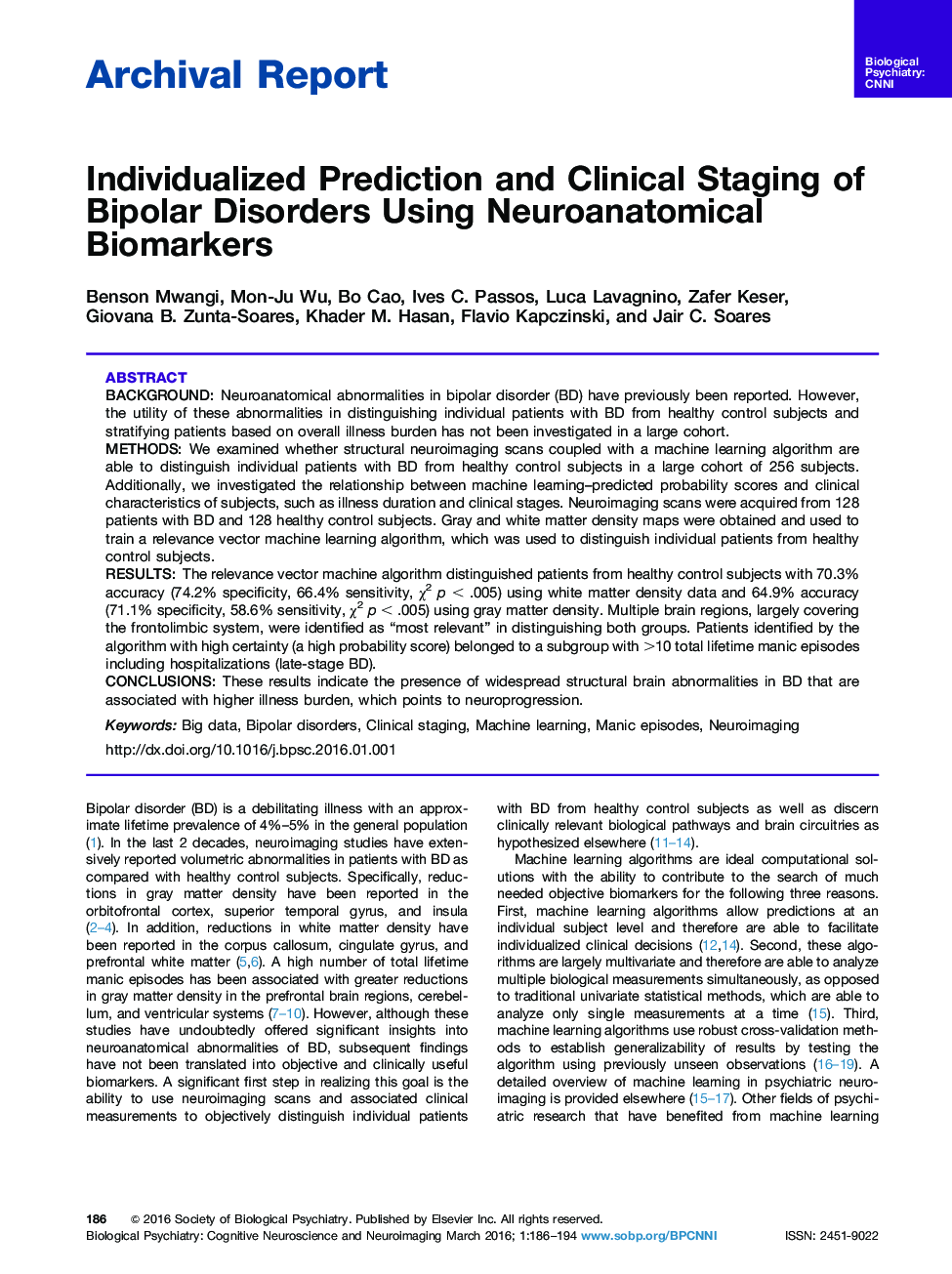| کد مقاله | کد نشریه | سال انتشار | مقاله انگلیسی | نسخه تمام متن |
|---|---|---|---|---|
| 4181430 | 1277112 | 2016 | 9 صفحه PDF | دانلود رایگان |
BackgroundNeuroanatomical abnormalities in bipolar disorder (BD) have previously been reported. However, the utility of these abnormalities in distinguishing individual patients with BD from healthy control subjects and stratifying patients based on overall illness burden has not been investigated in a large cohort.MethodsWe examined whether structural neuroimaging scans coupled with a machine learning algorithm are able to distinguish individual patients with BD from healthy control subjects in a large cohort of 256 subjects. Additionally, we investigated the relationship between machine learning–predicted probability scores and clinical characteristics of subjects, such as illness duration and clinical stages. Neuroimaging scans were acquired from 128 patients with BD and 128 healthy control subjects. Gray and white matter density maps were obtained and used to train a relevance vector machine learning algorithm, which was used to distinguish individual patients from healthy control subjects.ResultsThe relevance vector machine algorithm distinguished patients from healthy control subjects with 70.3% accuracy (74.2% specificity, 66.4% sensitivity, χ2p < .005) using white matter density data and 64.9% accuracy (71.1% specificity, 58.6% sensitivity, χ2p < .005) using gray matter density. Multiple brain regions, largely covering the frontolimbic system, were identified as “most relevant” in distinguishing both groups. Patients identified by the algorithm with high certainty (a high probability score) belonged to a subgroup with >10 total lifetime manic episodes including hospitalizations (late-stage BD).ConclusionsThese results indicate the presence of widespread structural brain abnormalities in BD that are associated with higher illness burden, which points to neuroprogression.
Journal: Biological Psychiatry: Cognitive Neuroscience and Neuroimaging - Volume 1, Issue 2, March 2016, Pages 186–194
